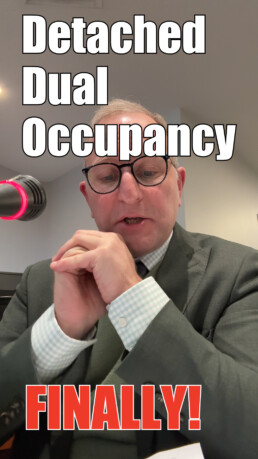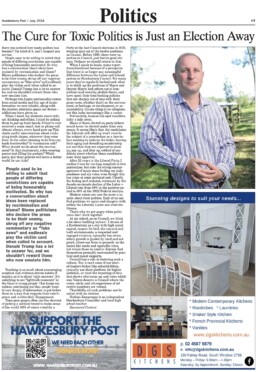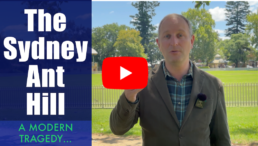Hawkesbury City Council
The Refurbishments to Windsor Mall
I recently took the opportunity to walk through the whole of the refurbished Windsor Mall and the video is here. Now the work is substantially done, I have to say it's looking amazing.
New sandstone flagstones greatly exceeds the original sandstone; the sponsored pavers are now proudly on display. The garden beds are now being planted with a range of attractive species. One concern I've heard a lot of concerns space for markets. Don't worry. There is still plenty of space for the markets! The layout is... different, but the gardens don't dominate which is the impression you might get from a single photo. Yes, there have been some changes to alfresco dining, but what I observed still gives space to those anchor tenants like Simon's Cafe or Second Home Cafe.
I met again with Harry from Simons and we discussed how other spaces close to the cafe such as near Loder House can be made available and I continue to advocate in that regard.
Dual Occupancy - Approved in principle! (Labor opposes)
Last night at a marathon Council meeting that went until past midnight, and with a full and very patient gallery who waited for three hours for this item to be debated, Council approved my Notice of Motion to permit Detached Dual Occupancies after seven years of delay and disappointment with our moribund LEP process. There's some way to go yet. The proposal now needs to be presented to the local Planning Panel, the State government's gateway process, and be placed on public exhibition. Despite this, staff admit that this change may still beat the LEP to the finish line, which is precisely my intention. Thanks to the passionate public speakers, and to my colleagues who endorsed this almost unanimously, with the exception of the Labor Councillor Amanda Kotlash.
The Cure for Toxic Politics is just an Election Away
Today, I bring you an editorial column I was invited to write for the latest edition of the Hawkesbury Post.
Check out the online edition of the paper here, or pick up your free print copy from the usual places. And please; support the local businesses that advertise in our local paper!
"Have you noticed how nasty politics has become? I’m tired of it, and I suspect you are too.
People used to be willing to admit that people of differing convictions are capable of being honourably motivated. So why has a conversation about ideas been replaced by recrimination and litigation? Blame politicians who declare the press to be their enemy, shrug off any negative commentary as ‘fake news’ and endlessly play the victim card when called to account. Donald Trump has a lot to answer for, and we shouldn’t reward those who now emulate him.
Perhaps this hyper-partisanship comes from social media and the age of misinformation we now inhabit, along with the shorter attention spans our device-addictions have given us.
When I teach my students about critical thinking and ethics, I start by asking them to put up their hands if they’ve ever received a scam email, text or phone call. Almost always, every hand goes up.
This starts useful conversations about evaluating truth claims, wherever they come from. Is the caller claiming to be from my bank trustworthy? Is vaccination safe? What should we do about the environment? Is that charismatic, rolex-wearing pastor just filling his pockets? Which party and their policies will leave a better world for our kids? Teaching is as much about encouraging sceptical and evidence-driven habits of inquiry, as it is about ‘right answers’. It’s satisfying to see ‘lightbulb moments’ in the faces of young people, and this keeps me upbeat. It convinces me that people want to care deeply, if information is put before them in a way that respects their intelligence and invites their engagement.
Time-poor people often use the shortcut of picking a political brand to make sense of the world. 66% of voters voted for a Party at the last Council elections in 2021, winning nine out of the twelve positions on Council. Before 1995, there were no parties on Council, just twelve good citizens. Perhaps we should return to that.
When I speak to locals, many report disenchantment because of a perception that there is no longer any meaningful difference between the Labor and Liberal parties on Hawkesbury Council. For many years they’ve regularly backed each other in to stitch up the positions of Mayor and Deputy Mayor, lock others out of committees (and recently, abolish them), and have spent their time backing policies that are sharply out of step with their grass roots, whether that’s on the environment, or heritage, or development, or accountability.
It’s one thing to be collegiate, but this looks increasingly like a racket.
Fortunately, Aussies can spot such inauthenticity a mile away.
Many of those elected on party tickets would never be elected under their own steam, and contribute very little to chamber debate. It seems likely that the candidates the Liberals will offer up won’t even be the subject of a preselection or a face-to-face meeting to endorse the ticket, leaving their aging and dwindling membership put out that they are expected to show up on election days, pay up, and shut up, robbed of any debate about whether these candidates meet their approval.
After 32 years in the Liberal Party, I confess I was for too long complicit in this pantomime, but I’ve been strongly encouraged by many since finding my independence and my voice, even though this has come at some personal cost. Clearly, the feeling isn’t isolated, evidenced by the decade-on-decade decline of the Labor-plus-Liberal vote from 98% in the postwar period to 68% at the 2022 Federal election.
Modern voters are now far more a-la-carte about their politics. Each of us can find positions we agree and disagree with within the Liberals, Labor and even the Greens. That’s why we get angry when politicians don’t work together.
At my school, as on Council, we think a lot about building ‘culture’. I dream of the Hawkesbury as a city with high social capital, respect for both the natural and built environments, a respected and engaged citizenry, naturally low crime, where growth is guided by need and not greed, where our focus is properly on the basics like roads and equitable rates, but where those in need or distress find themselves promptly surrounded by practical and moral supports.
Council has a role in fostering such a culture. But it can’t come if our elected leaders bicker like schoolchildren, cynically use their platform for higher ambition, or limit the reporting of data that shows who turns up and votes which way. Voters deserve a Council where the views, skills and life-experience of all twelve members are valued.
Thankfully, all such problems can be solved with an election."
Nathan Zamprogno is an independent Hawkesbury Councillor and local high school teacher.
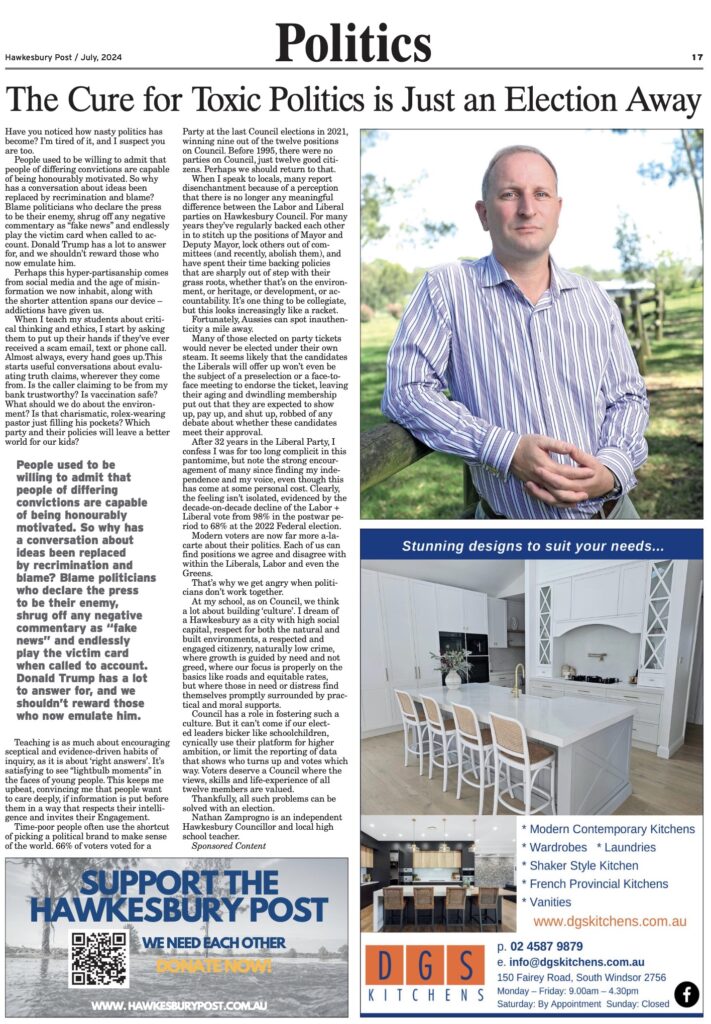
Should the Hawkesbury become part of the Sydney ant-hill?
The March edition of the Hawkesbury Post contains a text version of this article. This video version is intended as a richer, shareable version.
As a high school teacher, I like to run a lesson about an obscure concept called ‘the Tragedy of the Commons’.
It starts with buying milk at the shops. There you are in Coles or Aldi. Two bottles of milk sit next to each other, one with a use-by date five days from now, and another with ten. You know that you’d easily get through either bottle before the due date, but you do what most people would do, and reach for the freshest milk regardless.
Economists have long known that this is how people behave. Understandably, people make decisions that are best for themselves in that moment; the broader good of society isn’t on their mind.
The problem comes when everyone makes those ‘best for me’ decisions. In our example, perfectly good milk just a couple of days older gets left on the shelf until it ages past its use-by, spoils, and is thrown out.
I offer my students this metaphor as a stimulus, not merely to give them a complex about buying milk. I encourage them to find connections between the story and larger, more serious real-world issues. When we over-fish the oceans, power our society with resources we know will someday run out, overuse antibiotics, or sacrifice agricultural land for housing without regard to the sustainability of these choices, then we are playing out the same ‘tragedy of the commons’ on ever larger stages. Our individual decisions remain rational and yield us short term ease and comfort. But they are collectively bad for our descendants because the bill is generationally deferred.
This is never more obvious than when we consider Sydney’s boundless addiction to urban growth.
Former Labor Premier Bob Carr famously declared that Sydney was “full” back in 2000. Since then, Sydney has grown by another third. That’s over 1.3 million people. Carr’s successors in the current Labor government manifestly no longer share his assessment, secretly targeting a range of suburbs for massive new growth and unprecedented densification. Are we next?
The risks of fire and flood strongly bracket what kind of growth the Hawkesbury can endure. Hawkesbury Council’s housing policy suggests we could build more medium density housing around our major centres of Windsor and Richmond.
However, State Planning Minister Paul Scully is sending conflicting messages to us, writing on the one hand to our Mayor to enjoin us to do our share in creating 377,000 new housing commencements by 2029, and yet warning us that a new Floodplain Evacuation Study places strong constraints on how much development the Hawkesbury can sustain. I think we need much clearer guidance about what is being expected of us.
Many of you now face a daily multi-hour commute, plus an annual toll bill running into the thousands just to get to work. The alternative is to brave our rail line which lacks a promised connection to the Metro at Schofields, offers no express trains, poor parking, and which has had no upgrade since electrification in 1991. Already-approved housing developments will only exacerbate this problem – lamentable considering we are still catching up on the infrastructure necessitated by the last decade of growth.
Worse, the Hawkesbury’s youth are being squeezed out of their ability to remain in the communities that they grew up in and feel an affinity for, increasingly unable to afford to either buy or rent. Many are forced to move away, increasing social isolation and losing the benefits of family support.
Council could do more to ease this by implementing affordable housing mandates in new estates, diversifying our housing mix, and permitting more generous granny flats and secondary dwellings on house blocks under one title. I have supported such changes, but progress has been far too slow.
However, the biggest factor in this squeeze, and only grudgingly admitted by politicians, is Australia’s level of migration.
A post-COVID surge saw a record-breaking annual 615,400 arrivals to mid-2023. After accounting for departures, deaths and births, overseas migration represents 77% of Australia’s population growth (data: Federal Centre for Population Projections).
Astonishingly, in NSW the figure is closer to 98% (data: .id research, Dec 2023). Read that again: 98% of all the pressure for new housing, associated infrastructure and congestion in Sydney comes from overseas growth. Think about that when you’re stuck in traffic, and for heaven’s sake, think about it when you vote.
Governments at every level have had this infatuation with ‘growth at any cost’ since the end of World War 2, spurred by some economists, developers and their lobby groups. For example the Urban Development Institute talks incessantly about the need to unlock land supply, fast track approval pathways, lower infrastructure co-contributions while increasing the density and height limits on tenements.
All these factors affect the supply side, yet they studiously ignore the demand side caused by migration. They ignore a fundamental truth – No growth is limitless. In biology we call a body that seeks to grow without bound ‘cancer’.
Sadly, Labor and Liberal governments have been happy to march to this tune. They claim that housing unaffordability is the price we pay for the stimulus to the broader economy, and to the construction sector in particular. These and other concerns like balancing the intergenerational ratio of taxpaying Australians to retirees and pension recipients are valid, but if there are winners and losers in such national tradeoffs, too many of the losers seem to be concentrated at the outer fringes of our major cities, where we suffer congestion and crushing cost-of-living challenges.
Skilled migration should be a part of Australia’s future, but 615,400 arrivals – most of whom gravitate to Australia’s major cities, is too much. It would be prudent to reduce migration until the infrastructure backlog is addressed, and proper incentives formulated to encourage new arrivals to settle in Australia’s regions. It’s disgraceful that despite this elephant in the room, successive governments have never set a population target, or properly investigated what Australia’s ‘ideal’ population or rate of growth should be. Every study you’ll read merely attempts to reactively model the low, medium and high growth scenarios that ‘might’ happen because there is no population policy, and never has been.
If you drive through the ‘instant suburbs’ that have sprung up near the Hawkesbury, we see a style of development that is neither pleasing to the eye, nor representative of anything we should seek to emulate. Tiny blocks, no eaves, no trees, black roofs. Nevertheless, I have a growing folder of examples of realtors hawking nearby greenfield lands in the Hawkesbury to developers, tantalising them that these lands too will inevitably be rezoned and absorbed into the Sydney anthill, yielding much profit to their investors. Beleaguered landowners are faced with an invidious choice; be taxed off their land when speculation triples their land value (and therefore their rates), or give in to land-bankers who don’t care about the erosion to our sense of community.
Hawkesbury residents deserve more agency in determining the shape and scale of development in our city, rather than be carried along in the current of a fatalistic belief that more urban sprawl can’t be avoided, and will continue forever. In such a historic and beautiful area, we deserve better, and we owe better to our successors.
That process starts by ensuring that the elected representatives in our Councils and Parliaments are not in the pockets of developers.
Like the dilemma facing you in the milk aisle, our ‘tragedy of the commons’ is our addiction to unfettered growth. It might serve a logical, beneficial short term goal, but it is gradually undoing the threads of what it is that makes the Hawkesbury such a pleasant place to live.
The video version contains video courtesy of Sustainability Population Australia.
Council a step closer to honouring its pledge to seal Packer Road
Back in 2018, Council applied for (and got) a "Special Rate Variation" that put everyone's Rates up by a third.
I voted against that rate rise, as I have voted against every tax hike proposed by Council since I was elected in 2016. However, I did agree that a list of proposed capital works – improvements to local roads among them, was absolutely necessary so that the ratepayers could see where this extra money was going.
Among the proposed projects that would be funded was the sealing of Packer Road, a key east-west road linking the Putty Road travelling north from Wilberforce, and the river communities of Lower Portland, Cumberland Reach and Sackville.
Locals have long anticipated the sealing of this road, citing its heavy use, status as a flood evacuation route, and parlous condition, which has sadly included injuries and fatalities over the years.
Planning work commenced, including a budget variation of $100,000 in the December quarter of 2020 to scope and plan works. The road was listed in Council's capital works budget for 2020-2021 with a cost of $2,226,000.


COVID hit, along with fires and floods between 2020 and 2022, and Council's plans were greatly affected.
Fast forward to early 2024, and users of Packer Road were entitled to know where this was up to. Finally, the matter came back to Council on February 13th and everyone was hugely concerned to find that Council staff were now recommending that the project be dropped, due to a significant increase in the cost of the project from $2.2M to over $4.7M (source: Item 4.5.3, Feb 2024 business paper)
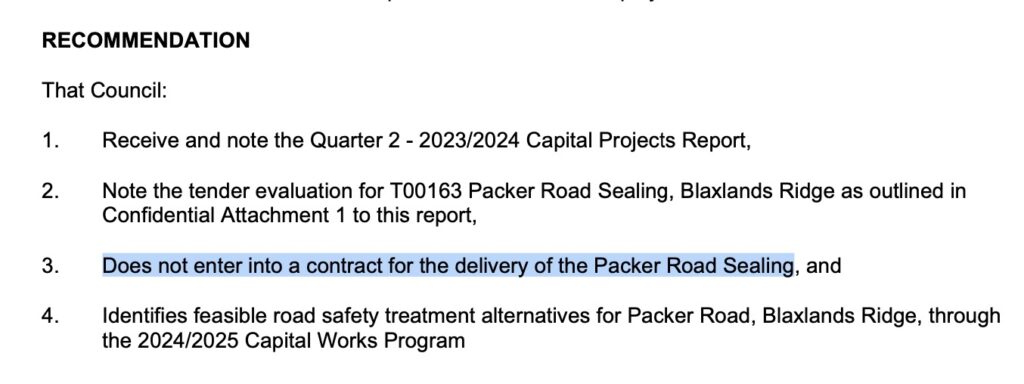
This brought a spirited response from the local community, with many of them writing, calling and attending the Council meeting.
I am very pleased that Council on this occasion rejected the advice of staff and formalised our commitment to sealing Packer Road, despite the increased cost. I believe it is important for Council to honour its promises. Sadly, with limited resources, other worthy road projects will now be deferred, which I successfully amended be the subject of a workshop with Councillors and staff.
Here is a sampling of the debate before the Council chamber as we discussed this:
The Windsor Paddlesports Club Grant saved after hanging by a thread!




I am also informed that (belatedly) the Council has confirmed the necessary "landowner consent" from Crown Lands.
The grant is not out of the woods yet, as there remains the question of whether the facility can be built within the grant monies pledged.
I will continue to advocate for a good outcome for the community.
Fix the bloody potholes!
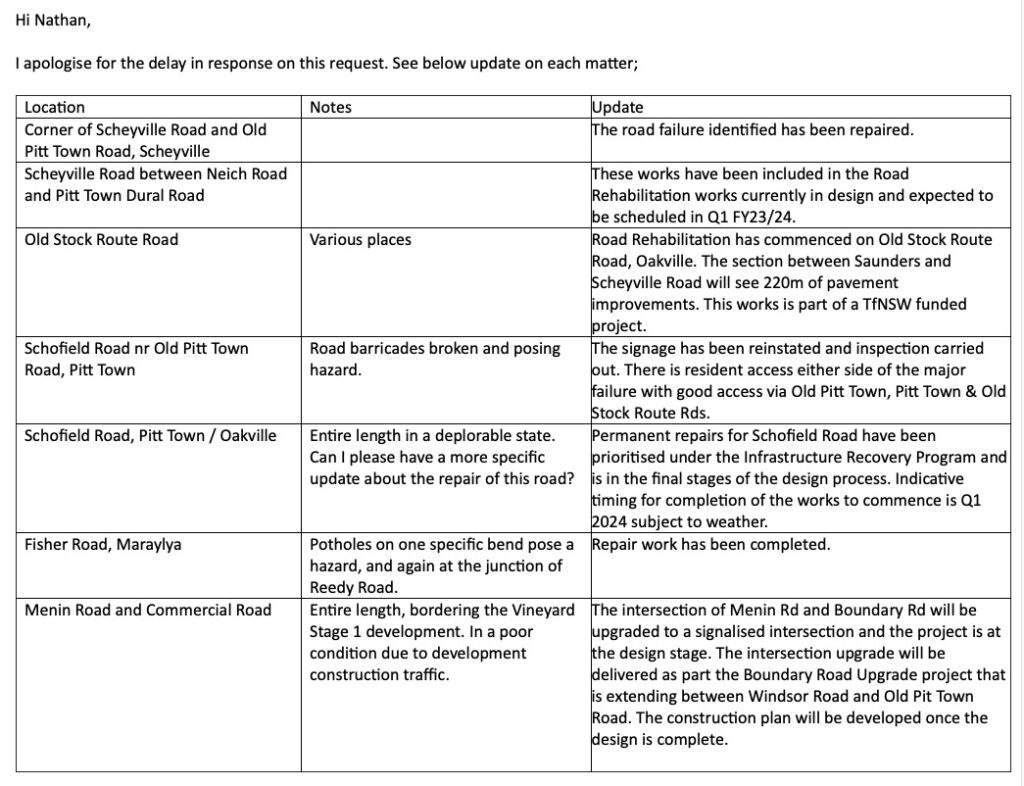
Windsor Mall - Our obligation to get things right
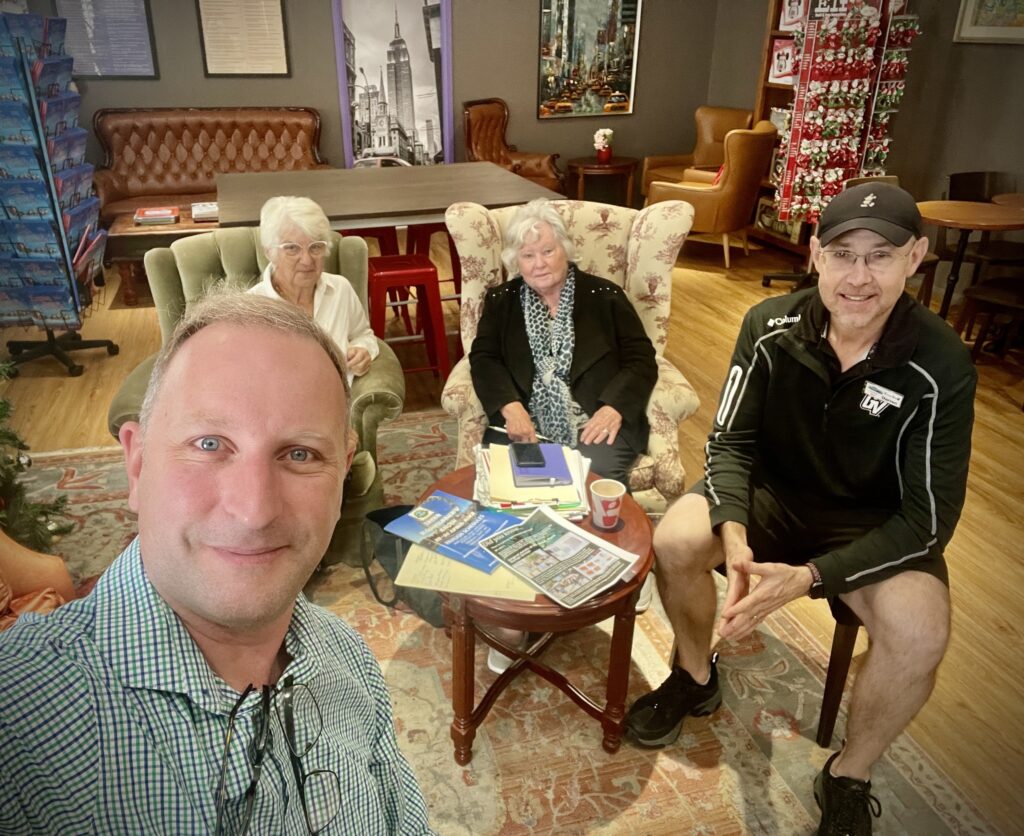
I have been raising concerns about the state of Windsor Mall for some time, including interviewing Darren Pead as a representative of the newly created 'Windsor Experience Action Group'.
In March 2018 Council became a signatory to the Western Sydney City Deal and were pledged $15M of State+Federal money towards ‘Liveability’ programs including town centre renewals if we brought $3.75M of our own money to the table. It was and is a good deal.
Sadly, the quality of the public consultation and proposed outcomes from upgrading Windsor Mall have left many, including myself and Councillors Sheather and Djuric, with concerns that we’ve missed the mark. I coined the term “Westfield-isation” to describe a plan that was not reflective enough of the unique heritage of Windsor. Early iterations of the plan dispensed with the gas lamps, rotunda, water-wheel and suggested street furniture with little charm or grace.
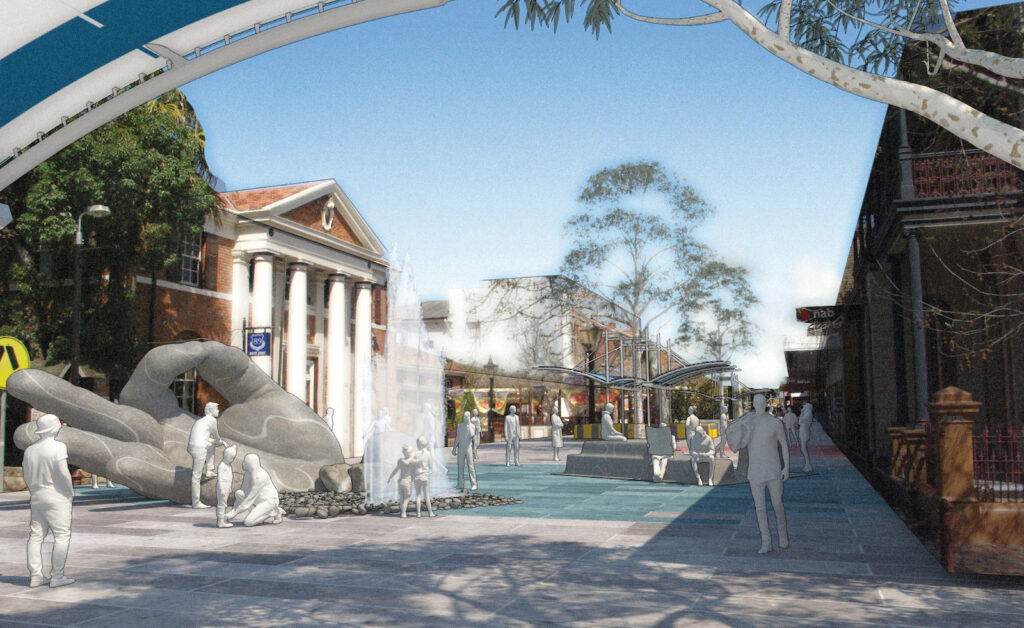
The area covered by the plans stretches from the Thompson Square dining area all the way to the railway station. This is a once-in-a generation opportunity and we need to get it right. Windsor deserved better.
Too much of the budget was consumed with replacing paving – and although some parts of the paving badly need attention, the opportunity cost was an ability to spread the budget down George Street, replace awful asphalt paving elsewhere, and add gracenotes to the precinct such as historical medallions, restoration of the lamps, and street furniture that better reflect our heritage.
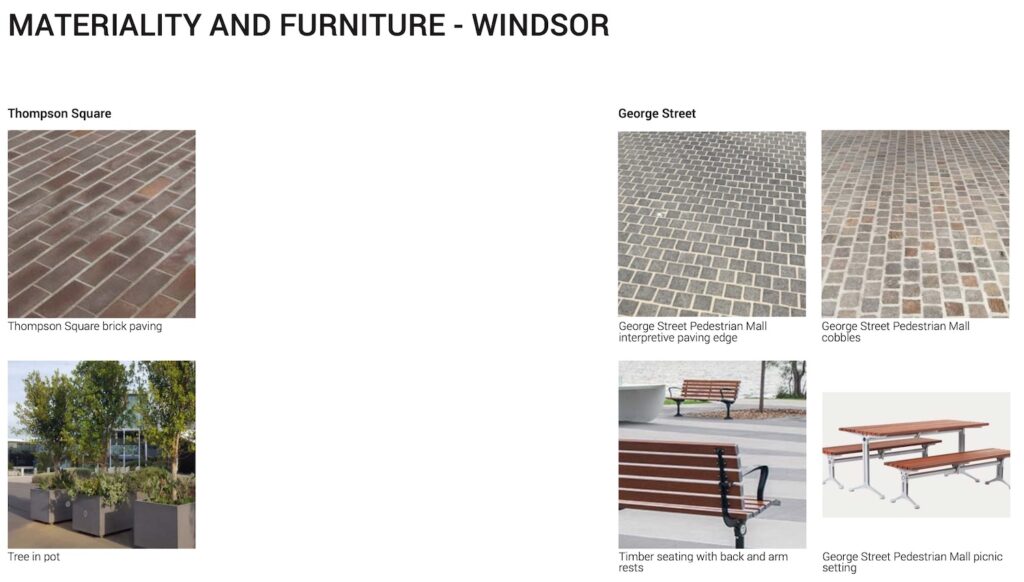
To revisit the plans carries a risk. The grant has a deadline and to ask for variations means the deadline may pass. However, our Federal MP Susan Templeman has spoken about this in parliament and my gut tells me that asking for time to get this right will yield the concessions we are asking for.
Clr Sheather brought a motion at our last meeting to revisit our plans and the business paper shows this will be discussed at next Tuesday’s meeting.
I hope a majority of our colleagues will support varying the scope of works to deliver a better outcome.
This week I was pleased to meet with Windsor business owners Darren Pead, Gae Kelly and former Mayor Wendy Sledge to discuss these matters. The Windsor Experience Action Group now boasts 69 members.
A New Accountability Measure - Report cards on Councillor Attendance and Expenses
May 2022 update.
I am disappointed to report that this reform, which I successfully passed in February, has since been rescinded by a rescission motion brought by the Labor and Liberal Councillors working together. Clearly they are disinterested in accountability of this sort, despite how warmly it was received by the community when I got it through before. They did not articulate any clear reasons why they felt there was new information that caused them to change their minds. Perhaps they realised that their attendance, expenses and whether they could demonstrate they got value from the conferences the Council pays to send them to made them feel uncomfortable. Further details of this reversal are here. I will continue the fight.
Original March 2022 post:
You're entitled to expect that your elected Councillors turn up to as many meetings as they can. It’s a critical part of our job.
Sadly, I've seen that this hasn’t always been the case. When the Hawkesbury Gazette sought figures on Councillor attendance in 2019, it found fragmented data. I was acknowledged as having among the best attendance records of any Councillor.
I resolved to do what I could to improve accountability.
Legally, Councillors can only be censured if they miss multiple formal Chamber meetings, but in my opinion that accounts for only about a third of what Councillors do. Data is either not collected, or not summarised relating to attendance at briefings, workshops, committee meetings and community consultation sessions.
Granny Flats: You deserve more choice | Hawkesbury City Council
I want to talk about granny flats and dual occupancies, because the way that Hawkesbury Council currently treats them is insane.
A dual occupancy is just a fancy way of saying there are two houses on the same block of land, but under one title, one owner.
It’s not like a subdivision because there’s no rezoning, no sale, or separation of the ownership of the land.
There are two kinds of dual occupancies: Detached, where there’s two, separated full-size houses on the same block, and attached where two dwellings are connected in some way, like a Duplex.

I live in an attached dual occupancy here at Oakville with my family, where we have two houses which are connected by a covered walkway.
And here’s the crazy thing: At Hawkesbury Council, detached dual occupancies are forbidden because of, wait for it, flood evacuation risks. And that's regardless of whether you’re in Bilpin or Oakville, well out of harms way of a flood. But put that covered walkway in, and everything’s peachy. Totally fine. Permitted.
Detached dual occupancies are already permitted (with constraints) in many other Councils, like Penrith, Hills, Cumberland, Parramatta, Northern Beaches.
But it gets worse: People often get confused between Dual Occupancies and “secondary dwellings”.
Secondary dwellings are much smaller, only up to 60 square meters- which is little more than 1 or 2 rooms, and must be close to the primary dwelling. We call them “Granny flats”.
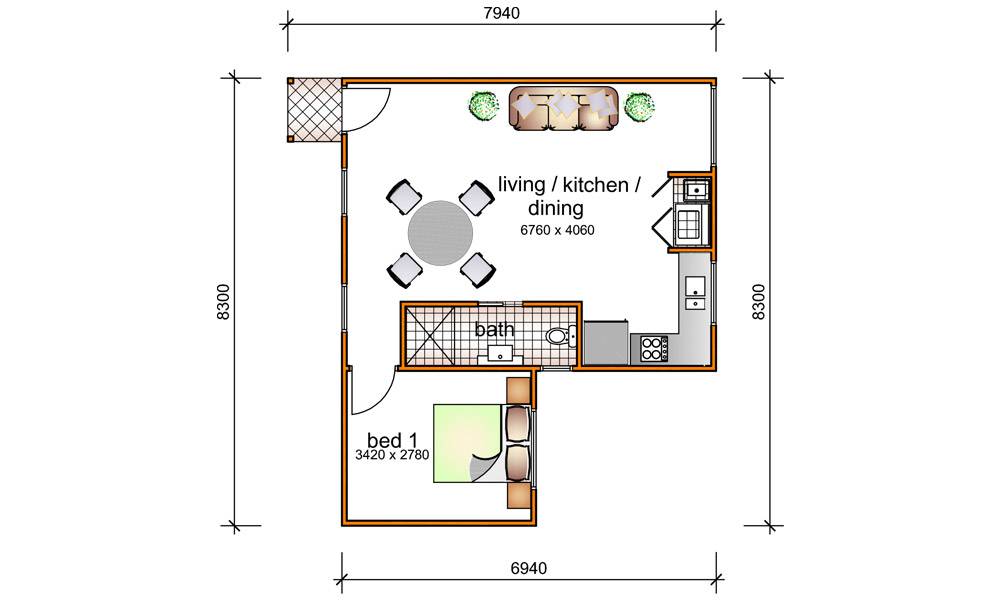
Now if you want to build a granny flat in, say Bligh Park, or Hobartville, in any of these residential zonings, on a block that’s under 800 square meters, apparently that’s fine.

But if you live in one of these zonings in a rural area, like a five acre block, 25 times the size of a house block in Bligh Park, the answer is no. You can’t. It’s not allowed.

This makes no sense at all.
During this this term of Council I have been the strongest advocate for reform of these rules, but I’ve been stymied by a lack of support among the other Councillors.
I’m seeking your support to continue this work through your vote in the upcoming election.
Let me explain why this is important:
For a balanced community, the Hawkesbury needs a mix of housing types. I’ve argued that dual occupancies confer a range of social benefits.
Your ability to put another dwelling on the land that you own could allow you as parents to give a leg-up to your kids to build a home, or get equity in the market, or to continue to live in the communities that they grew up in, or to enable grandparents to care for their grandkids.
On the flipside, it might allow you to look after your parents in their senior years with a degree of independence, but still close to those they love, sharing the burdens of property maintenance or the costs of living.
The way that my family lives exemplifies this: I live in a multigenerational household, with toddlers, teens, adults, seniors, spaniels and cats living together in a joyous chaos.
This 2020 article from the Sydney Morning Herald on multigenerational households really resonated with me.
I’ve heard this described as a very European way of living. It’s not for everyone, but for many families it makes a lot of sense. For some, it’s an economic necessity.
But ultimately it’s about choice. Your choice.
Studies show that one in five households are multi-generational, and that figure is growing (Source: City Futures Research Centre, UNSW Dept of Built Environment). And 40% of people in their twenties are still living at home (Source: Australian Institute for Family Studies).
To me, it’s an example of how something obscure – good planning laws, can strengthen our communities by empowering Council to plan for diversified housing choices with far less impact on existing services and infrastructure than full blown subdivision.
Others support secondary dwellings because it represents a form of affordable housing, which we badly need more of.
Lastly, we can’t ignore the fact that many acreage areas are and will continue to be subjected to development pressure. I. am.no.fan.of.overdevelopment.
But dual occupancies may represent a kind of happy compromise between the status quo, and the wholesale rezoning and carve-up that developers want to inflict on us.
Many people I speak to want a sensible solution like this, but I challenge you to find another Councillor that can point to a public statement they’ve made in support of it.
And you and I probably know someone in the area with a clandestine granny flat that’s offending nobody but against the rules.
In February this year, Hills Shire Council next door took advantage of a change in State rules, something called the ‘LEP Standard Instrument’ to apply for, and get, a more generous definition of Granny flats.
As a result, Hills landowners can now build granny flats that are still modest, but larger than before: whichever is the larger of 110 square meters or 20% the size of the main dwelling, up from 60 square meters.

I’d like Council consult and consider doing the same, using a place-based approach that’s sensitive to all the factors and constraints, like land fragmentation, loss of agricultural capacity, emergency evacuation, local roads & infrastructure and the protection of the environment.
As I said, I’ve tried to drive reform in this area and so far I’ve failed.
Our best hope is the detailed work Council has done this year in revamping our LEP and DCP – our two fundamental planning codes, but progress has been been painful and slow.
I’ve pushed for these proposals to be put into the new codes for public comment, but it’s the next Council that will sign them off.
I’d love to hear your views. What do you think?
When will the NSW Local Government Elections be?
https://youtu.be/o2ELM-_ZGP4
Participants should be aware of new arrangements that have been made for posters and electoral material distributed during the COVID-19 pandemic, contained in recent changes to the Local Government election legislation.
To comply with public health orders at the time of the elections, or to reduce the risk of COVID-19 infection, the Electoral Commissioner may direct that no posters are to be displayed and that noelectoral material is to be handed out to voters for the December 4 elections at:
- a polling place or a pre-polling venue, or
- premises occupied, used by, or under the control of the NSW Electoral Commission, other NSW government agencies or a council within 100 metres of a polling place or a pre-polling venue.
Premises include buildings of any description, other structures and land (such as the street).
Given the evolving Delta strain outbreak, candidates and parties should be prepared that directions limiting posters and how-to-votes may be made by the Electoral Commissioner across NSW.
The Vineyard Development area
Recently I completed a trio of short videos that go together in covering issues relating to housing development.
My desire is to touch on larger issues affecting our city and its future growth, but I use the example of the proposed development of the Vineyard area to illustrate them.
They cover:
- The extent of the Vineyard development in the context of the North West Growth Sector
- The role of both developers, the State Government, and Councils have in funding and delivering infrastructure
- The role of IPART, the Government's independent pricing regulator, in adjudicating whether Council's infrastructure plans are economical.
Here they are together.
Part 1: Development and Congestion in Hawkesbury City
Part 2: Who should pay for Infrastructure when housing development comes?
Part 3: Don't let population pressure tear our community apart.
The BLOR and M9/OSO Corridors, Part 2
This post is the second of two in response to a proposal to create two motorway and rail corridors through the Hawkesbury.
The first video provides some historical context to the broader phenomenon of State and Federal governments foisting large projects on unsuspecting communities. The challenge of balancing long term planning and the impact on individual communities has frequently been botched, and I cited the history of corridor sell-offs, and earlier proposals for airports, prisons, dumps and new suburbs, by both major political parties, as salutary examples.
What follows is a transcript of the video, with documents referenced on-screen linked or inserted as needed.
TRANSCRIPT:
In the first video, I provided a small history lesson about the litany of misguided schemes that governments of both hues have cooked up over the decades for the Hawkesbury, and how each one, after a fight from the community, was scuttled, and the government of the day had their asses handed to them, on a plate.
Today, let me be far more specific about the current corridor proposals. This video is also a part of my submission to Transport for NSW.
Point 1: Both these corridor proposals are equally bad.
It is true that the Bells line of road corridor has gained more publicity here in the Hawkesbury, including through a very well attended meeting at Clarendon showground a few weeks ago. But the fundamental problem of both corridors are the same.
Both corridors divide rural communities, destroy productive agricultural and equine lands, diminish visual amenity, endanger ecological communities and threaten the futures that families thought they had by buying homes outside of what I call ant-nest Sydney.
And both corridors suffer from the deficiencies of process that have landed these proposals on unsuspecting voters, without sufficient community consultation, without enough knowledge of the options to make meaningful contributions to the debate, and in a time-frame that is far too short.
The community has had barely 8 weeks to inform themselves and organise to have their say on projects that may happen decades from now. What’s the rush?
Point 2: The River crossing has to be back on the table

We are free to speculate that the government will change its mind about the Castlereagh corridor. It may default to the original 1951 alignment, and it may choose to stop at the Hawkesbury Nepean river instead of crossing over it.
If that’s the case, then the question of an extra crossing of the river must be back on the table.
I always believed that only someone as major as the M9 could deliver what we’ve always needed – a new crossing of the Hawkesbury Nepean River, somewhere between North Richmond and Wilberforce.
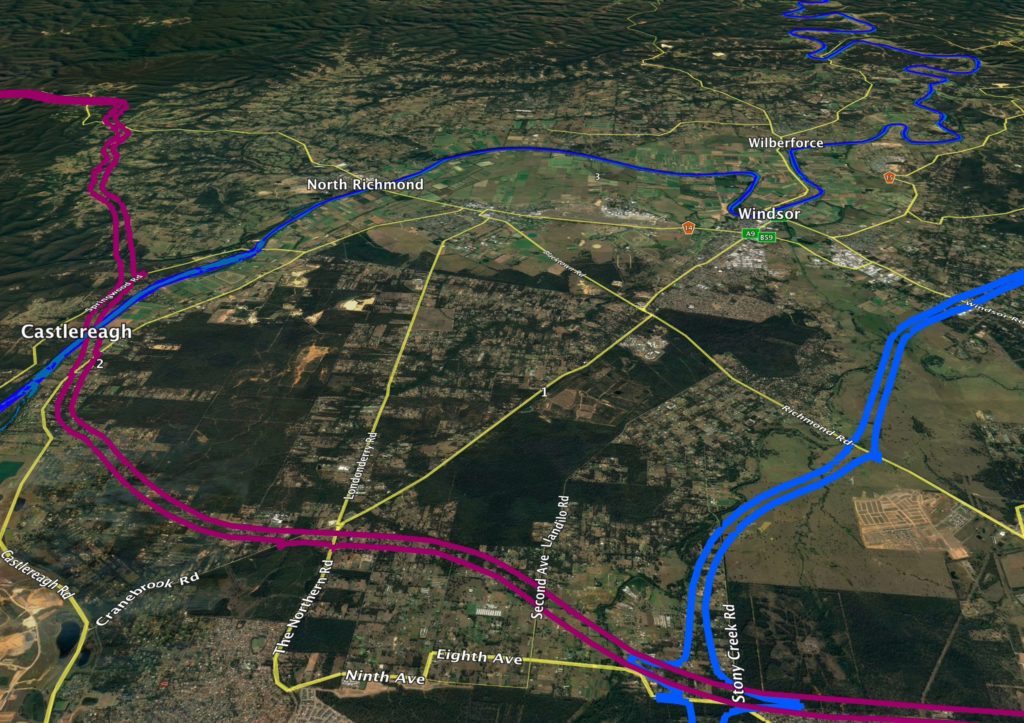
It turns out that we got proposals for two corridors, and neither delivered. The briefing Council received on the Castlereagh corridor actually suggested that it would help alleviate traffic on Windsor Road, by putting a new crossing of the river at Castlereagh, more than half the way to Penrith. Bollocks!
But what a huge political win it would be for the party that redirected the M9 along, say, the south creek floodplain, crossed the Hawkesbury river downstream of Windsor bridge, and joined it to the Putty road, providing a link to both the Hunter and Newcastle as originally intended.

Point 3: Why are both corridors roads to nowhere?
The Bells line corridor is irrelevant unless there is a major amplification of Bells line itself west of Kurrajong Heights and over the range. There isn’t anything like a compelling case for this given that billions have been spent over the last two decades to upgrade the Great Western Freeway.

And the M9 corridor konks out at Maraylya. Here’s what the terrain looks like between there and Newcastle. Mountainous terrain, National parks, wetlands, another major crossing of the Hawkesbury River, and well downstream, so the river is broader and deeper.

If there’s little prospect of the corridor being driven north of Windsor Road, why endure the political pain of taking it even that far?
Point 4: Why is the government’s material contradictory and incomplete?
Why do the government’s press releases and maps state that the corridor passes through Box Hill?

Below, the area in purple is Box Hill, in the Hills Shire, and on the left is the corridor. They are not the same.

Why does the draft EIS reference the M9 corridor as only running from Windsor Road and south to the Hume Highway at Menangle?

Why is the vegetation study in the draft EIS so incomplete?
I’ve created a tool in the program Google Earth. The online map that Transport for NSW provides is difficult to navigate and doesn’t allow you to leverage other geographical datasets and overlay them on the corridor.
This overlay I’ve created allows you to see the Hawkesbury ends of both corridors and toggle them along with other useful data, like alternative routes and a vegetation study.
There’s a link to this overlay at my website, along with a longer video tour of what it shows. All you need is the Desktop version of Google Earth for Mac or Windows, and that’s a free program.
Nobody else seemed to be doing this kind of analysis, so I thought I’d do my bit.
What you can see here is the area of the M9 north of Windsor Road, in Oakville, Vineyard and Maraylya. Here is an overlay of the vegetation study map that appears on page 96 of the OSO Draft EIS dated March 2018.

This looks a little muddy, but the green areas represent “Threatened ecological communities” and the hatched areas represent “Cumberland Plain Priority Conservation Lands”. Even from this map, it’s obvious that the M9 corridor goes through threatened ecological communities.However, what concerns me more is that this map is incomplete.

Here is a 2002 map from NSW National Parks overlayed on the same area. It shows many more stands of Cumberland Shale Forest – areas that just don’t appear on the Transport for NSW Map. And it’s not because there has been mass deforestation since 2002 – the amount of tree cover in this area has remained pretty constant over the years, precisely because landowners look after them as rural lands.
If I toggle the layers, you can see a huge difference. The draft EIS has massively underestimated the tree cover, and the conservation value of the lands under the M9, and it seems apparent that the BLOR corridor study suffers from the same defect.
Point 5: What is the future of this part of the Hawkesbury anyway?
The government can’t have it both ways. It says it needs to reserve this corridor through the area because of future land use pressures. But this land is currently zoned rural, for acreage properties.
Here’s the property on the corner of Old Pitt Town Road and Speets road – part of the Sydney basin’s diminishing store of productive agricultural land. It’s also smack bang underneath the M9 corridor.
Here’s a map you’ve probably never seen. The red area is the area defined by the current North West growth sector. The part that’s in the Hawkesbury is this bit south of Commercial Road and Menin Road.
The outer dashed line represents the outer boundary of what’s called the SEPP – it’s the planning instrument that makes the North West Growth sector possible. It encompasses a much larger area – all of Oakville, the rest of Vineyard, most of Maraylya, and parts of Mulgrave and McGraths Hill.
Why stick a fuse in something unless you’re going to light it? We already know large chunks of land inside the dashed boundary, but outside the North West Growth Sector, are already subject to development, like this huge area north of Old Pitt Town Road. When will the other shoe drop?
Hawkesbury Council will be reviewing its Residential Lands Strategy later this year. I grew up in Oakville, and live there still. My heart is to protect our rural amenity and provide a buffer between the development at our door, and our agricultural lands, the National Park, and the remnant Cumberland Woodland that still exists outside the boundaries of the park.
But as an elected representative, I have to weigh what is best for the whole community. If there has to be development in the Hawkesbury, this is the area closest to Windsor Road, closest to the new rail infrastructure, not subject to the pinchpoints of the river and its inadequate crossings, and relatively flood free.
I’m calling on the state government to be honest with the community and to tell us if there are any plans to subdivide land outside the current growth sector boundaries.
For example, there's this from the OSO Draft Strategic Environmental Assessment, which says:
The Growth Area LUIIPs have assumed that the recommended corridor will be formally identified in the future, and will inform more detailed planning for precincts yet to be rezoned. For example, the DPE is considering land immediately north of the Vineyard Precinct as providing future opportunities for employment and industry related to the future OSO infrastructure, with detailed planning to commence once the location of the recommended corridor is formalised.
The areas north of the Vineyard Precinct are in Oakville and Maraylya, and are currently zoned "Rural". Questions I have asked of departmental officials about the long term future of Oakville, Vineyard and Maraylya have been met with silence.

Point 6: Why weren’t we told?
Minister for Western Sydney, Stuart Ayres made much of saying that the announcement of these corridors was already the culmination of plenty of consultation with the community. Bollocks.
Here’s a glossy document that came out in 2014, three years ago, titled “A plan for growing Sydney”. And in that document is the only map I’ve ever seen that shows, before this announcement in March, where the corridors may have been.

It clearly shows the possibility for these corridors to affect Castlereagh, Grose Vale, Yarramundi, Bowen Mountain, Kurrajong in the west; and Oakville, Maraylya and Vineyard in the East.
No one I have spoken to in any of those communities were consulted. Not one. And not Hawkesbury Council, to the best of my knowledge.
Point 7: There are plenty of alternatives.
I’m not a town or transport planner. Maybe you are. But why has the government placed one option for each corridor before us, and left it to us to suggest alternatives?
I feel inadequate to the task, but here are some starters.
Stop the corridor at Windsor Road.

Follow the South Creek catchment and cross the river downstream from Windsor (see map above)
Follow the alignment of the North West Rail Line extension corridor.

Or, there's this proposed solution from a road lobby group, Roads Australia.

Lastly, the funds could be diverted into local road solutions.
Point 8, and my last: Do not forget the political dimension.
I am an elected Liberal, and statistically, most Hawkesbury voters are Liberal voters. This isn’t a left-right thing – my last video showed you a long list of awful thought bubbles foisted on us by past governments of both hues.
But I lament that the bad way in which this issue has been handled by an otherwise praiseworthy state government has given a huge free kick to our political opponents.
The government has made a mistake in both these corridors. I can’t find it in my heart to attribute to malice what can easily be explained through stupidity.
The government simply needs to step back, realise it may well lose the next State election if it keeps this up, and without ego, change its mind – just as it was mature enough to do on the question of council amalgamations, greyhound racing, and stadiums.
I think it’s actually the mark of a good government to put things out there and then really heed criticism. It needs to do that now, because the damage has already been done.
Even if you’re watching this after the deadline for community submissions, which is June 1st, please let me encourage you to keep the pressure up, especially by calling and writing to the office of your state member of parliament, Dominic Perrottet, Stuart Ayres, and the Premier, Gladys Berejiklian.
My name is Nathan Zamprogno, and these views are my own. They are not Council policy and they are not the “Liberal Party line”, whatever that is. I’d love to know what you think.
A Google Earth overlay of the OSO-M9 and BLOR-Castlereagh corridors
In my videos on the OSO-M9 and BLOR-Castlereagh corridors (Part 1 and Part 2 are here) I reference a Google Earth overlay I developed that draws together data from a variety of sources.
My other posts do not tour the various layers that have been incorporated into the layout, so I made another short video to show you around.

Please note that my focus is on the northern extents of the corridors passing through the Hawkesbury LGA. My apologies if you have come here from the Camden locality looking for data on the southern extent of the M9. Perhaps someone down your way can do a similar analysis.
What is a Google Earth overlay?
You are already familiar with Google Maps. Perhaps you use the web based version on your browser or smartphone.
There is a more powerful standalone app called "Google Earth", which allows more sophisticated data to be layered on top of the general map, and layers can be toggled and edited.
The document format for an overlay carries the ".KML" or ".KMZ" extension. They are functionally the same. ".KMZ" files are simply compressed and take up less space.

How do I get Google Earth?
It's free! There are versions for Windows and Mac, and you can download them here.
There is also a version called "Google Earth Pro", and it will work, but the standard version is fine.
Can I use the version of Google Earth through the Google Chrome Browser?
Not to view my overlays. You need to use the app for Mac or Windows. You can't use the Google Earth App for Android or iOS, either.
Where can I get your overlay of the road corridors?
At THIS LINK HERE.
What do I do once I've got it?
If you have Google Earth installed, and you've got my file "M9_BLOR_Corridor_Analysis_Clr_Zamprogno.kmz"
then double-clicking it should bring it up in the Google Earth program as a series of layers and folder in the left-hand pane of the app. Experiment with toggling them on and off. You can do this individually or as whole folders.
Note that the layouts will come up with a splashscreen with my notes. It's the first thing you'll turn off by deselecting "Title Graphic" in the left hand pane.
Hawkesbury City Councillor Zamprogno interviewed on Hawkesbury Radio on corridor reservations
I was pleased to be invited by Gary Cotter from Hawkesbury Radio today and talk to him about the State Government's announcements of land reservations for both the Castlereagh corridor (Bells Line of Road) and the Outer Sydney Orbital (M9) corridor.
Both these announcements may have substantial impacts on the Hawkesbury. On the one hand, governments should be praised for forward, generational thinking. On the other hand, their claim that the chosen locations were based on extensive community consultation is completely false.
Listen along to the interview (<14min) and tell me what you think. There will be much more to say about this soon!
https://soundcloud.com/nathan-zamprogno/nathans-hawkesbury-radio-interview

